

COM,MA
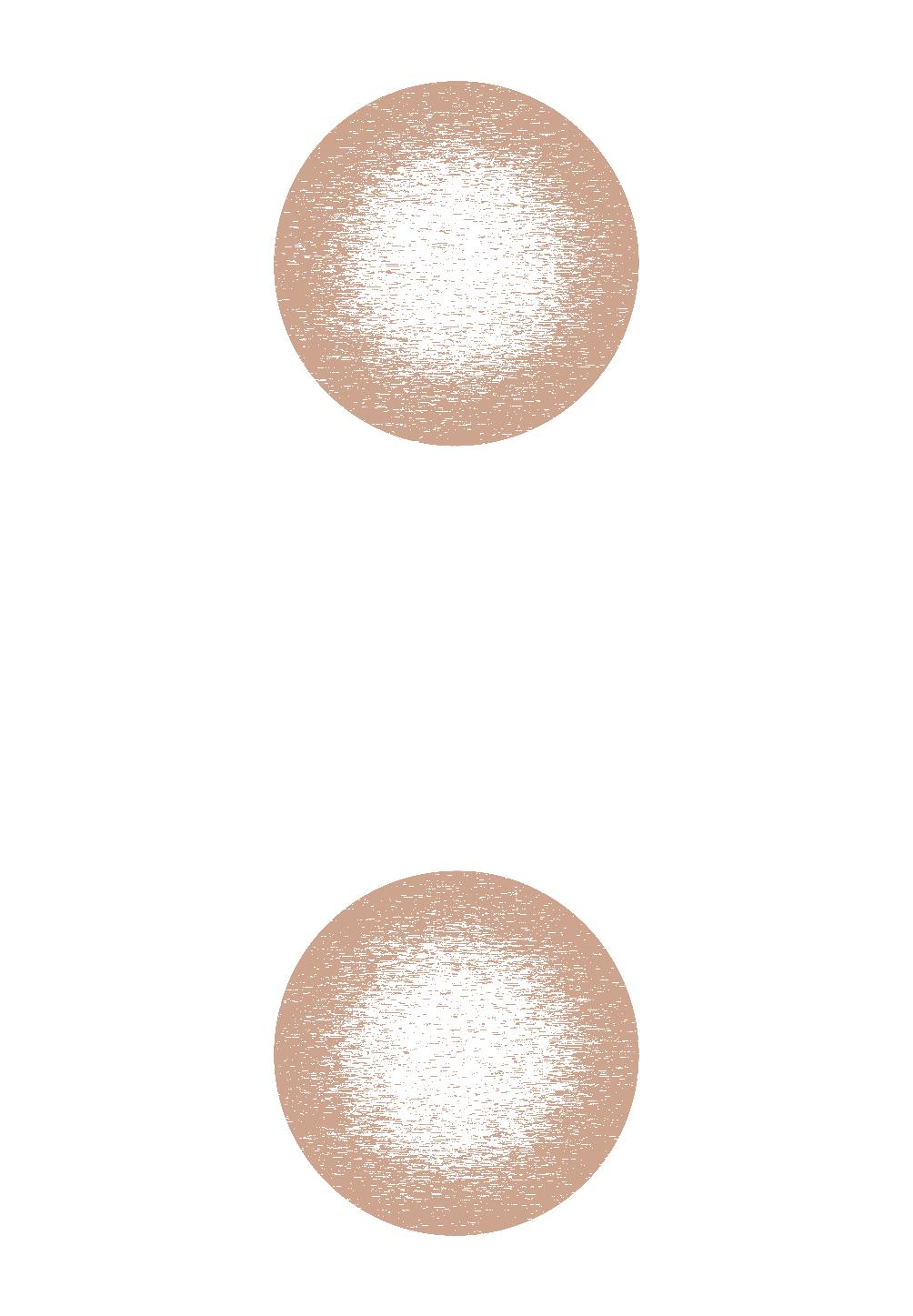
SOFT RUPTURE
COM,MA MA:AP 2020
A comma marks a soft pause within a sentence, The pause gives space for inhaling and exhaling, When breathing today has become such a conscious action, That carries a sense of danger.
A comma is not a stop, But an opportunity for internal and external reflection, A comma is not a silence, But a time to act and to raise our voices through our creative endeavours.
A comma is an invitation, Space to process conventional existence, A comma offers perspective to survey past, present and future, It helps to distinguish reality from noise, truth from illusion.
A comma is a soft rupture...
COM,MA has become the bridge linking our artworks throughout this year’s journey, showing the equilibrium within fields, it is not a time for inaction, it is time for re-calibrating and shaping what is yet to come, the pause is vital to this process of change. Due to the nature of the limitations imposed by the current pandemic, we, as individuals and as a group, familiarised ourselves and adapted to the momentary multiple interruptions.
The heterogeneity of the works and the exhibition identity convey artistic perception of the here and now, imaginable futures to come and exposes our concerns. As artists, our role is to agitate concepts, promote change, stimulate ideas and thoughts, generate curiosity, and raise questions. Using the idiosyncratic methodologies developed through creative practice, this MA:AP group engages with political, social and ecological challenges. The consolidation of diverse perspectives and backgrounds with institutional and capitalist critique, has culminated in new knowledge production.


AN EXCEPTIONAL YEAR
UNDER EXCEPTIONAL CIRCUMSTANCES
EVE OLNEY
I imagine it will take many years to objectively distance ourselves from the time of Covid-19 in terms of understanding the psychological impacts of the imposed changes within modes of capitalist production and, in turn, how that has affected our own individual embodied sensibilities. However, there does seem to be a shared consensus regarding a shifting perception towards our relationship with the temporal and spatial. Time feels different. Time is not so much collectively measured and experienced within taxonomies of seasons, months, weeks, but instead between imposed governmental levels of social isolation. Time has also almost usurped weather as our favoured brief conversational exchange. How are we spending our time? How are we coping during this time?
The MA:AP exhibition, COM,MA, is symptomatic of this current anomaly in time. It serves as a collectively conceived break, or ‘time out’, from a normative sense of linear time carried along the spectrum of social reproduction. As a collective body of work COM,MA presents us with an elucidation of experience of present social conditions; a deliberate pause that opens up a new aesthetic field of deep reflection on the here and now. For me, the work collectively addresses two questions that are in perpetual renegotiation within art/cultural theory and practice. Firstly, the artwork’s contemporaneous relationship with the current social imaginary. Secondly, it concerns itself with how the artist situates their own subject position within ideological modes of social reproduction.
At the intersection between these two is of course arts ability, in the first place, to probe and evoke a ‘deep introspection’ of the social. Art practice is, in this respect, uniquely positioned in its ability of composing aesthetics that can communicate way beyond the confines of language and, therefore, can conceive an imaginary beyond ideologically-held understandings of power. Art practice can offer unique vantage points, outside of what we already know about ourselves and society. Catarina Araújo’s film and sculptural work carries the thematic of the body’s relationship with trauma, where the artist casts the body’s performative registers of trauma across other mediums as a means of externalising that which is immanently hidden within the everyday. Padraic Barrett ’s photographic work also employs the body as a performative medium; this time as a ‘messenger’ communicating the embodied fallout of a competitive market-driven advancement of technology and the shaping of the body by capitalist social conditions. Seán Daly’s installation refers specifically to perceptions of alterity due to social restrictions and lack of movement caused by the pandemic. Ubiquitous materials, such as soil, sand and stone, are critically reshaped to evoke a shifting ‘sense of place’ within a personalised reconceptualisation of ‘home’.
Other artworks featured in COM,MA , could be understood as direct responses to current social conditions within a global crisis of governance. Work from Aoife Claffey, Kate McElroy, Inguna Mainule and Joseph Fogarty lean upon a local understanding between the observer and the objects, where this dialogical interplay evokes a subjective sensorial experience that extends into broader complicities regarding our own role and agency within the social. At times it is deceptively playful, as with Claffey’s ‘immersive environments for sensory stimulation’, that expose fractures of ‘chaos’ and ‘fragility’. This work infers a casual dispensing of products and people within a blindly assumed regulation of global capitalism. McElroy conjures a commitment to a type of non-space that can be read as those peripheral overlooked spaces where the ‘discarded’ detritus of capitalism quietly accumulates. This is indicated amongst installations of photographs, broken panes of glass and discarded materials as the work wavers between notions of significance and insignificance. Fogarty focuses on the phenomenon of a ‘self-perpetuating consumerism’ within ‘neo-liberalist economies’ where waste — here registered within the material properties of the work being Styrofoam, plaster and steel — is the residue of unfulfilled expectations and empty value systems. Mainule’s social critique of ‘soft power’ through her obscure, yet recognisable, soft sculptural works plays upon the reasoned logics we apply to our perceived ‘structure of reality’. Her sculptures assume logical formations that on closer inspection betray a system carefully constructed in order to deceive and to conceal ulterior agencies at play.
This exhibition also provides a strong indication of where artists might position themselves as social actors and creators within the current imaginary. The works presented in this show all tend to assume positions of a shared culpability in terms of how they relate to broader material environments. Ida Mitrani’s work, exemplifies ‘an ethics of accountability’1 within a broad, holistic social ecological interrelationship between people and plants. Her work draws attention to our conditioned perception or ‘blindness’ towards what is of value to humans and what can be overlooked. Deirdre Breen’s work also raises questions of value in terms of objects’ commodity status. This work is strongly indicative of where art intervenes in the object’s life, through a reversal of market-driven values, as it is reconfigured within a new narrative of aesthetic significance within the artwork.
Each artist presents work with starkly contrasting material choices and exhibit unique methodological approaches to their subjects. Yet, another common thread between each work might be identified as the reframing of ‘waste’, or overlooked materials, recast as productive forces within the different artforms. What curator Nicolas Bourriaud refers to as, ‘the point where the exform emerges’. Within each of these works the discarded materials are aesthetically transformed into active agents that the observer must engage with. These serve as sites of complicity within ‘the process of exclusion and inclusion’ and ‘constitute an authentically organic link between the aesthetic and the political’2.
COM,MA presents a visually striking collection of perspectives, styles, approaches that situates art practice as a central component of ‘knowledge making’. Within this multifarious exhibition, complex schemes of social relations find multiple aesthetic realisations in a way that communicates the complexity of our inter-relationship with those social structures that govern us. The aesthetics produced and performed within these contexts are understood as ‘a sensation experienced’ by the observer through a strong implication of an alterity; an alternative waiting on the periphery, an entire reconfiguration of the social in the making.
1. Stalpaert, C. ‘On Ecology, Protest, and Artistic Activism in Benjamin Verdonck’s Bara/Ke (2000)’, in Emerging Affinities: Possible Futures of Performative Arts (Ed.s) Mateusz Borowski, Mateusz Chaberski, Malgorzata Sugiera, [transcript] Theatre Studies, Vol 127, 2019, p. p232
2. Bourriaud, N., The Exform, London: New York, Verso, 2016, p.x.
CATARINA ARAÚJO
PADRAIC BARRETT
DEIRDRE BREEN
AOIFE CLAFFEY
SEÁN DALY
JOSEPH FOGARTY
INGUNA MAINULE
KATE McELROY
IDA MITRANI
CATARINA ARAÚJO
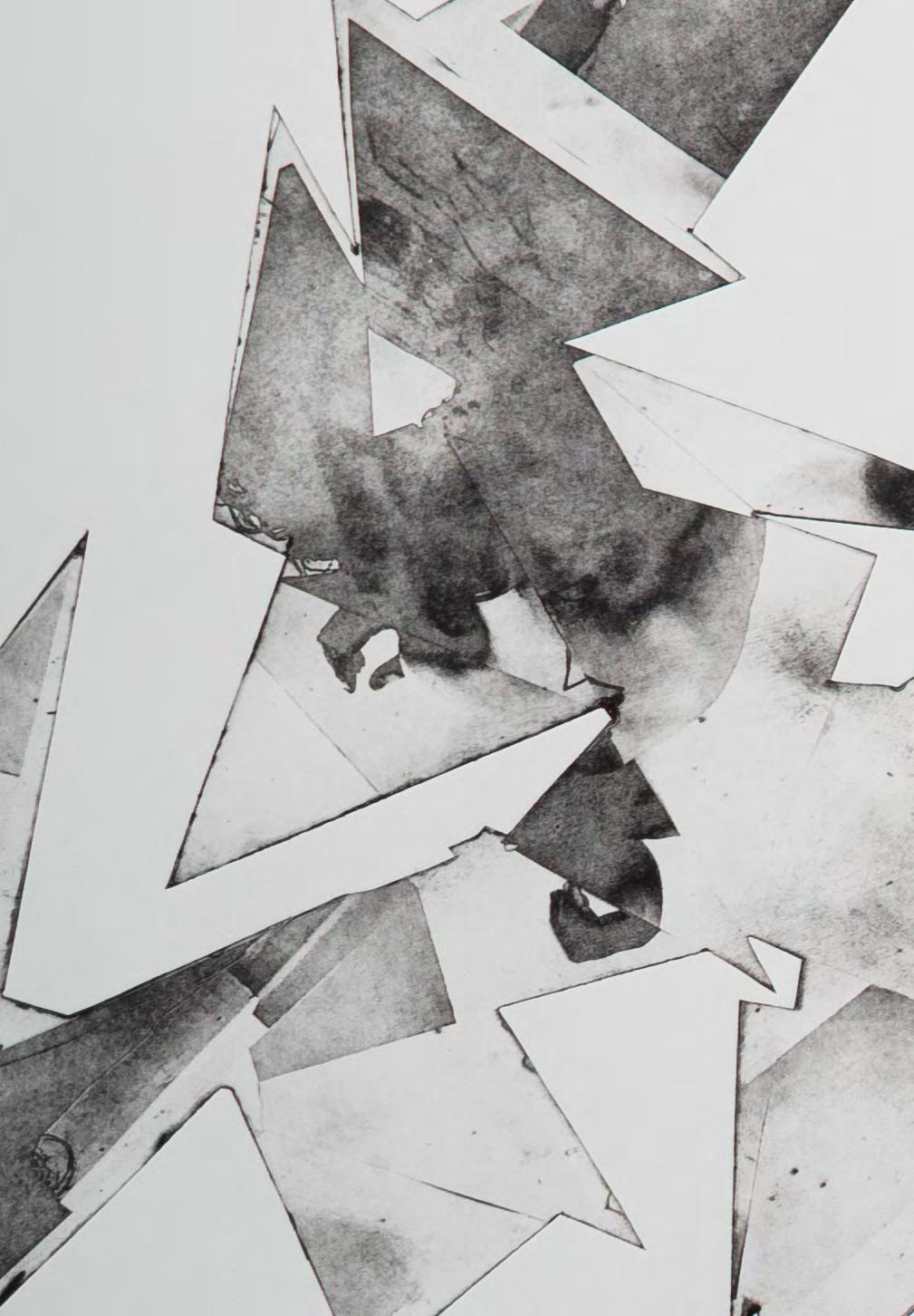
My art practice explores personal trauma, repressed memories, and behavioural patterns. The work develops an introspective connection between the body and past experiences that are accumulated beyond the mind and incorporated into bodily sensations, reactions and the perception of things.
Through engagement with film, printmaking and sculpture, I present fragments of a performative body in a frantic and intimate way, to extrapolate what is hidden within and what has been lost to oblivion. The obsessive repetition of the triangular form is drawn by an intrinsic desire to uncover new structures and to achieve equilibrium within them.
The work aims to stimulate dialogue and present art practice as an appropriate way to address psychological trauma through non-verbal selfexpression and sensory knowledge.
Catarina Araújo


Araújo Quântica - Two1 2020 paper sculpture and glue
Catarina

Catarina Araújo left to right:
Quântica - Two2 ; Quântica - Three2
2020
paper sculpture and glue; film
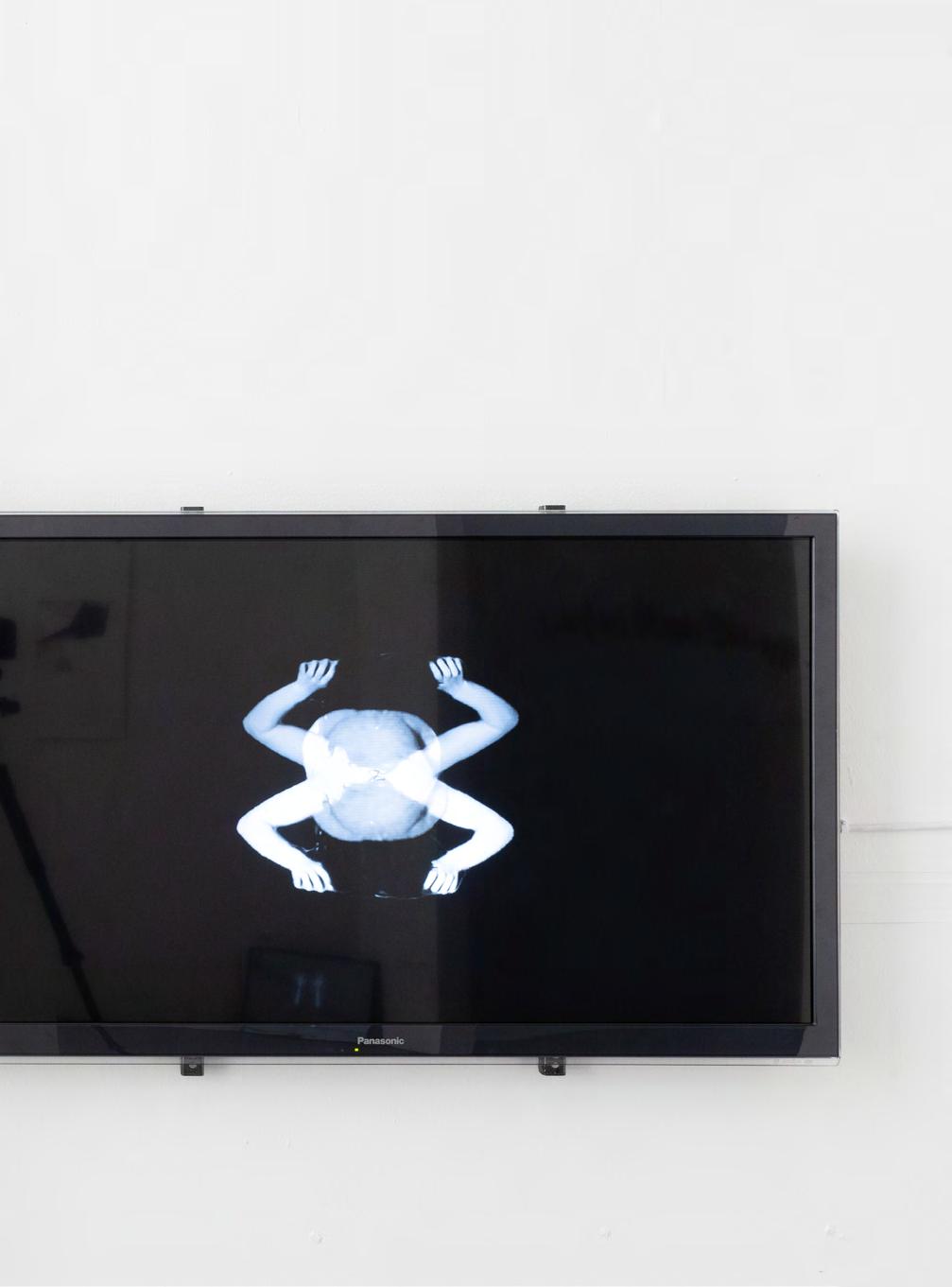


Catarina Araújo left to right: Quântica - One1; Quântica - Three2
2020 photo intaglio; film
Catarina Araújo left to right:
Quântica – Four ; Quântica - One2 ; Quântica - Three1 2020 film; photo intaglio; film




Catarina Araújo Quântica - One+Two+Three+Four=Ten 2020 paper sculpture, glue and nails
PADRAIC BARRETT

My work is a response to the imperceptible forces of surveillance capitalism and its role in the gradual deterioration of the human condition. By placing the naked male figure in a suspended and simulated space in time I allude to the activation of a state of heterotopia.
I have merged performance, film and installation to focus on the impact of a bewildering and constantly changing political theatre. The inscriptive capitalist ideals that are scripted onto the body, as well as the various ways in which strategies of power are stage-crafted, signify a ceaseless search for the threshold between reflection and transformation.
Explorations of technological dispositifs and cognitive processes are probed to convey oppositional forces through a transcendent narrative that initiates a dialogue between sacrifice and rebirth, virtual and natural, the weighted and the invisible. Identification with shamanistic ritual gives me the scope to take on the role of the performer as avatar and facilitates an investigation into the possibility of rebalancing the place of human beings within the natural world.
Padraic Barrett
The Engineering of Consent 2020
film projection on circuit boards (dimensions variable)
Padraic Barrett



Padraic Barrett
The Engineering of Consent 2020 film projection on circuit boards (dimensions variable)
The Engineering of Consent 2020
film projection on circuit boards (dimensions variable)

Padraic Barrett



Padraic Barrett
The Engineering of Consent 2020 film projection on circuit boards (dimensions variable)

Padraic Barrett
The Engineering of Consent 2020
film projection on circuit boards (dimensions variable)

DEIRDRE BREEN
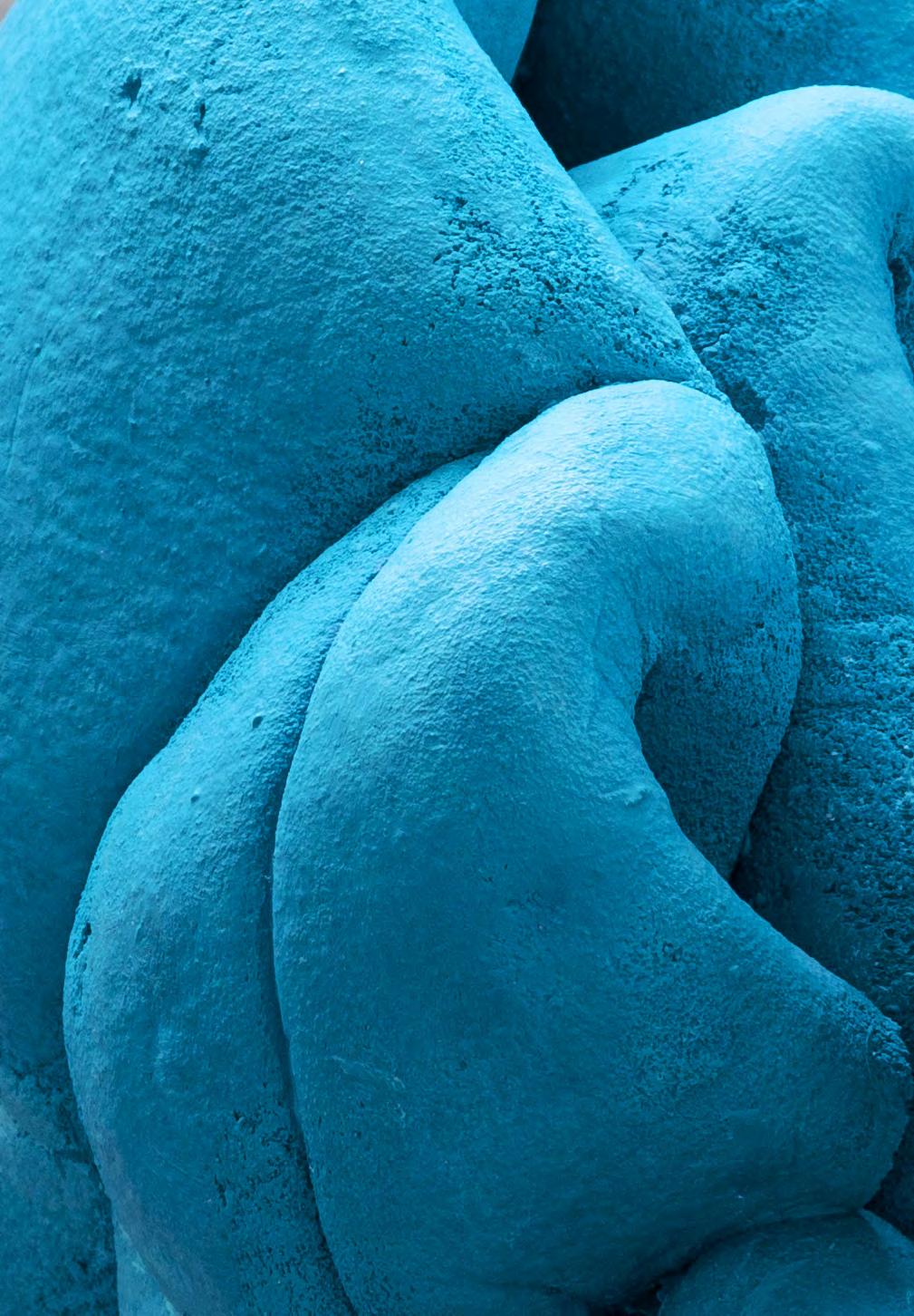
My practice raises questions about our place as embodied humans in the world and the ways we produce, reproduce and consume our material environment. I am exploring the presupposed meanings that we ascribe to matter, and the underlying perceptual structures that support these meanings.
The work interrogates the idea of an assumed hierarchy of materials, looking at what is disposable and what is venerable, questioning the value of the mundane. In dialogue with disposable culture and commodity fetishism, the ordinary is transformed into the extraordinary. Colours reference trends and conventions of contemporary visual culture.
The work suggests a vitality inherent in objects we consider inanimate; industrial and domestic materials are manipulated and redeployed to subvert our associations to their familiar qualities, confronting our understanding of our material reality. A gestural language emanates from the artworks; forms demonstrate object attributes and emulate personality but lack obvious functionality, existing for their illusionary qualities rather than a perceived use. A lively aesthetic speculates on the agentive power of ‘things’ so that a material imagination might unfold.
Deirdre Breen
Bulge 2020
jesmonite

Deirdre Breen



Clung (detail)
2020
Deirdre Breen
8mm steel bar, acrylic spray paint, jesmonite
Deirdre Breen
Sprout 2020
jesmonite; 8mm steel bar, acrylic spray paint, jesmonite


Deirdre Breen
left to right: Sprout ; Bulge 2020
jesmonite; 8mm steel bar, acrylic spray paint, jesmonite installation view

Deirdre Breen
Clung 2020
8mm steel bar, acrylic spray paint, jesmonite

AOIFE CLAFFEY

In today’s world, rapid developments in transportation, communication and media are seen as progressive. However, they also exacerbate the fracturing and destabilisation of society. Societal structures appear to dissolve through the acceleration of technologies. My work examines this through Irish transportation sites and systems. Using associated materials and media, I explore increasingly tenuous relationships between humans and objects. Objects are redeployed and their status reduced to arouse pure sensory stimulation or hallucination on identity.
Using translucent layers of imagery and sound, I create immersive environments that transform unexpectedly each time the work is encountered. By manipulating these properties, I aim to provide an ambiguous space for the viewer to recall the peripheral, a space that’s in the midst of a constant, perpetual transformation; a non-space.
During the process of making, I often allow activity to go beyond my control. Physiological and psychological tensions between chaos and order are encouraged both during the making, and within the work, to evoke uncanny effects or altered cognitive states. Using projection, found objects, motors and surround sound as agents for political and social change, my practice aims to critique these systems. Focusing on the reality of turbulently existing on the cusp of global selfinduced crisis, my work encompasses notions of unpredictability, fragility and movement.
Aoife Claffey

Claffey

quadraphonic sound, projection film onto water and found objects installation
Aoife


quadraphonic sound, projection film onto water and found objects installation
Aoife Claffey
Claffey

quadraphonic sound, projection film onto water and found objects installation
Aoife
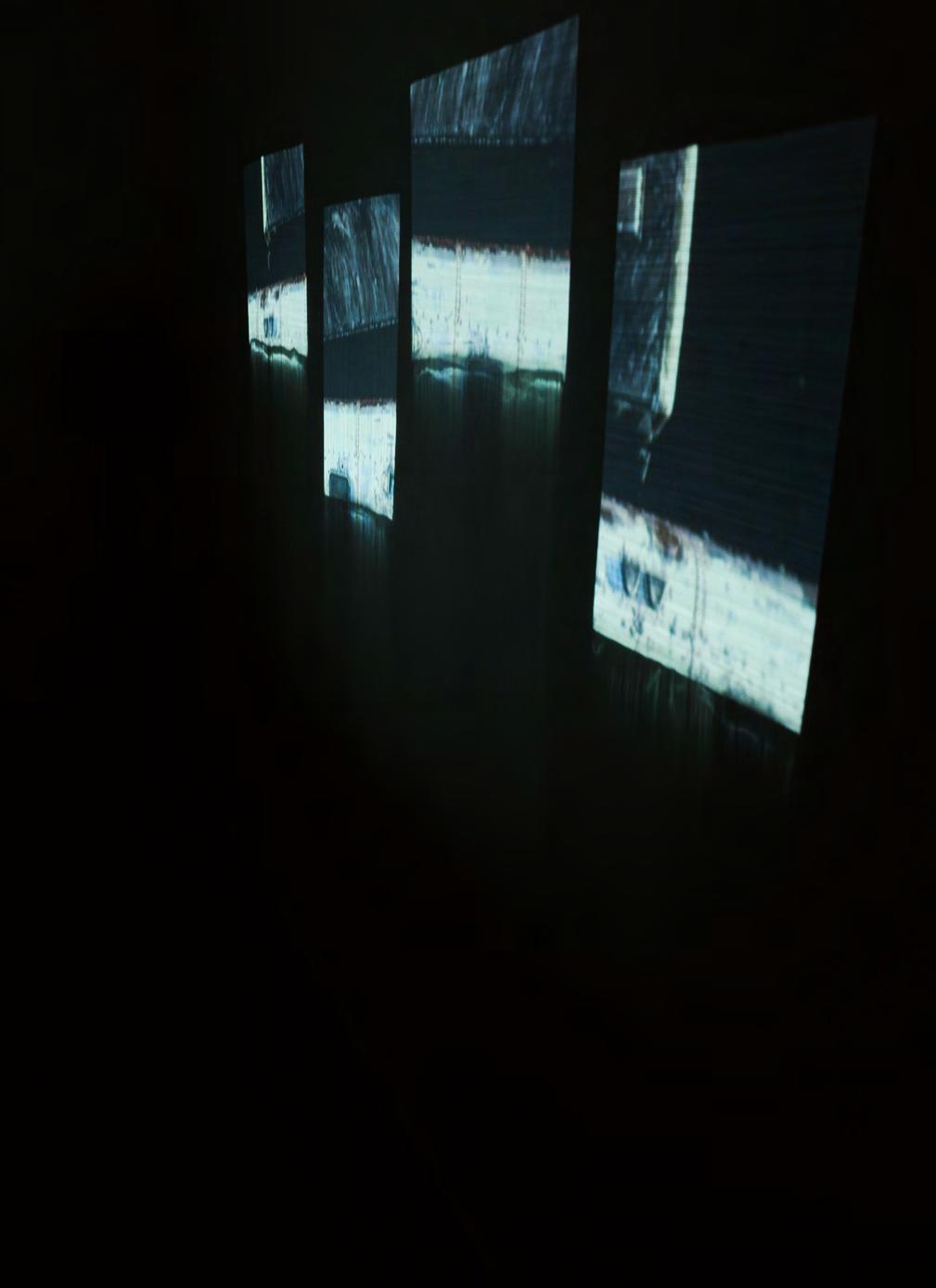
Aoife Claffey

quadraphonic sound, projection film onto water and found objects installation

Claffey

quadraphonic sound, projection film onto water and found objects installation
Aoife

SEÁN DALY

My practice explores a connection to place, specifically the area of woodland surrounding my family home in the Waterford countryside. As a concept, place is far more than the geographical space as represented on a map, it is a space that is actively lived in, has a history and cultural context that mediates our actions within it. By engaging in a deep-mapping study through photography, sculpture and cartography, I aim to better understand and represent the multifacetedness of place and personal ties to the land.
Disconnected from home as a result of the restrictions on movement within the current health crisis, I find myself searching for a connection to home. Songs, poems and objects holding a semblance of home become items for introspection.
Sand, stone and soil were extracted from the very surface of the land and delivered to me by my father just before lockdown. These humble materials are permeated with memory and meaning giving the connection to home a tactile, physical form.
Seán Daly
Seán Daly 92.7km
2020
plywood, ink on graph paper, polished soil spheres
70×100×78 cm



Seán Daly 92.7km 2020
6 photographic prints, plywood, soil, glass, 7 polished soil spheres, line drawing installation view



5 photographic prints, soil, water, glass, plywood 11.5×174.3×37.8 cm
Seán Daly 92.7km 2020


Daly 92.7km
2020
photographic print, line drawing, polished soil spheres, sketchbook installation view
Seán
pencil drawing in sketch book

Seán Daly 92.7km 2020
30×43.5×1.5 cm

JOSEPH FOGARTY

My work is an exploration of our relationship to objects. I am exploring this relationship in the context of a self-perpetuating consumerism that is one of the hallmarks of neo-liberalist economies. Our consumption of goods is facilitated through the promotion of brand and identity and is at best a manipulated choice that is creating what the French philosopher Jacques Rancière (2011) calls ‘mass individualism’.
We are involved in a constant quest for completeness where the corporeal and the physical are used as substitutes for the psychological and the spiritual. It is the transient in pursuit of the intangible.
The work focuses on the cycle of consumption that epitomises our unfulfilling entanglement with the world of materiality. There is a transition from the state of expectancy and the potential of the acquisition of a new object to the mundanity of its everyday use-value. This is symbolised by the stripping away of the carefully designed and engineered packaging.
Using materials associated with the presentation and the transportation of goods I am exploring this change in status. By manipulating and altering the state of the materials I draw a parallel between the expectations we have as individuals and our expectations as a society.
Joseph Fogarty
Joseph Fogarty
All that we are? ( II )
2020 plaster, wood, woodscrews, mirror, perspex, castors, paint

Joseph Fogarty
All that we are? ( II )
2020 plaster, wood, woodscrews, mirror, perspex, castors, paint



Joseph Fogarty
All that we are? ( II ) 2020 plaster, wood, woodscrews, mirror, perspex, castors, paint

Joseph Fogarty
All that we are? ( I )
2020
styrofoam, plaster, stainless steel nuts & bolts, MDF, castors, paint
Joseph Fogarty
All that we are? ( I )
2020
styrofoam, plaster, stainless steel nuts & bolts, MDF, castors, paint

INGUNA MAINULE

The Non-Objective World
Human nature craves conformity, structures, order; yet my body of work interrogates the deception of our perceived reality which brings the comforting and familiar into an uncomfortable setting.
This work, collectively, creates a warped surrounding. Familiar objects are portrayed as strange, absurd and illogical. This manipulation of the reliable, the ordered yet on closer inspection chaotic, challenges the viewer in a social context. Material properties exploit the oppressive and obsessive, allowing for a provocative twist on assumptions and sensations. Materiality plays out in a variety of media, including installation, film, motion, food processing techniques and the more traditional disciplines of painting and sculpture.
The balance between the established and the unknown challenges society’s transparency and questions the untruth. The installation creates an authentic space to contemplate our personal and internal revolutions.
Inguna Mainule

Inguna Mainule left to right:
H.A.L.T. (Homeless, Angry, Lonely, Tired); Pink Chair ; Mint Condition; Four Stools; The Non-Objective World; By the Light of the Moon a Worm is Quietly Nibbling ; Comma; Relational Aesthetics; 48 % 2020
vacuum bags and fabric; pink upholstery foam; pink upholstery foam; iron frame, pink upholstery foam, vacuum bags; bin liners, board, pink upholstery foam, 7"display (1024×600) film with sound; oil on stretched canvas; black ink on paper mache; bin liners, band rings; leather, board, upholstery foam, fabric


Inguna Mainule Bread of Life and Living Water 2020 bread and fabric


Inguna Mainule
By the Light of the Moon a Worm is Quietly Nibbling 2020 bin liners, board, pink upholstery foam, 7"display (1024×600) film with sound
Inguna Mainule left to right:
By the Light of the Moon a Worm is Quietly Nibbling; Order; Comma; Relational Aesthetics; 48 % 2020
bin liners, board, pink upholstery foam, 7"display (1024×600) film with sound; bin liners, board, pink upholstery foam, 7"display (1024×600) film with sound; black ink on paper mache; bin liners, band rings; leather, board, upholstery foam, fabric




Inguna Mainule left to right:
Selfportrait; Pink Chair; Mint Condition; Four Stools; The Non-Objective World; By the Light of the Moon a Worm is Quietly Nibbling 2020
framed pink icing; pink upholstery foam; oil on canvas with pendulum; iron frame, pink upholstery foam, vacuum bags; oil on stretched canvas; bin liners, board, pink upholstery foam, 7"display (1024×600) film with sound
KATE
McELROY

Kate McElroy___
A layering of space and time, my work interplays found elements and photography. Traces of places, remnants of spaces___
A sense of flux, capturing an environment that is in transit and transformation contrasted by a sense of presence and slow observation. I am interested in the intermingling invisible forces that shape our environments and actions.
I capture elements on the edge of abstraction, stretching the usual register of perception. I present an ambiguity, so the viewer has space to recreate and move beyond the visible. The work often implements an optical oscillation, subtly suggesting a reality that is not fixed, but malleable.
My work captures a place in process, simultaneously constructing and deconstructing. It highlights a betweenness, a binary, where definitive boundaries dissolve . . . . . ,
Through correlating photographic processes and re-presenting materials often discarded and overlooked, I prise open a gap.
An opening, to consider an alternative___
Kate McElroy
Sensation, Inflection
2020
transparent film, multiple exposure 35mm film


An Unfurling Unknown; Reflect, Affect; In_between 2020
photograph on Hahnemühle rice paper; found object; glass, aluminium, threaded bars
Kate McElroy left to right:
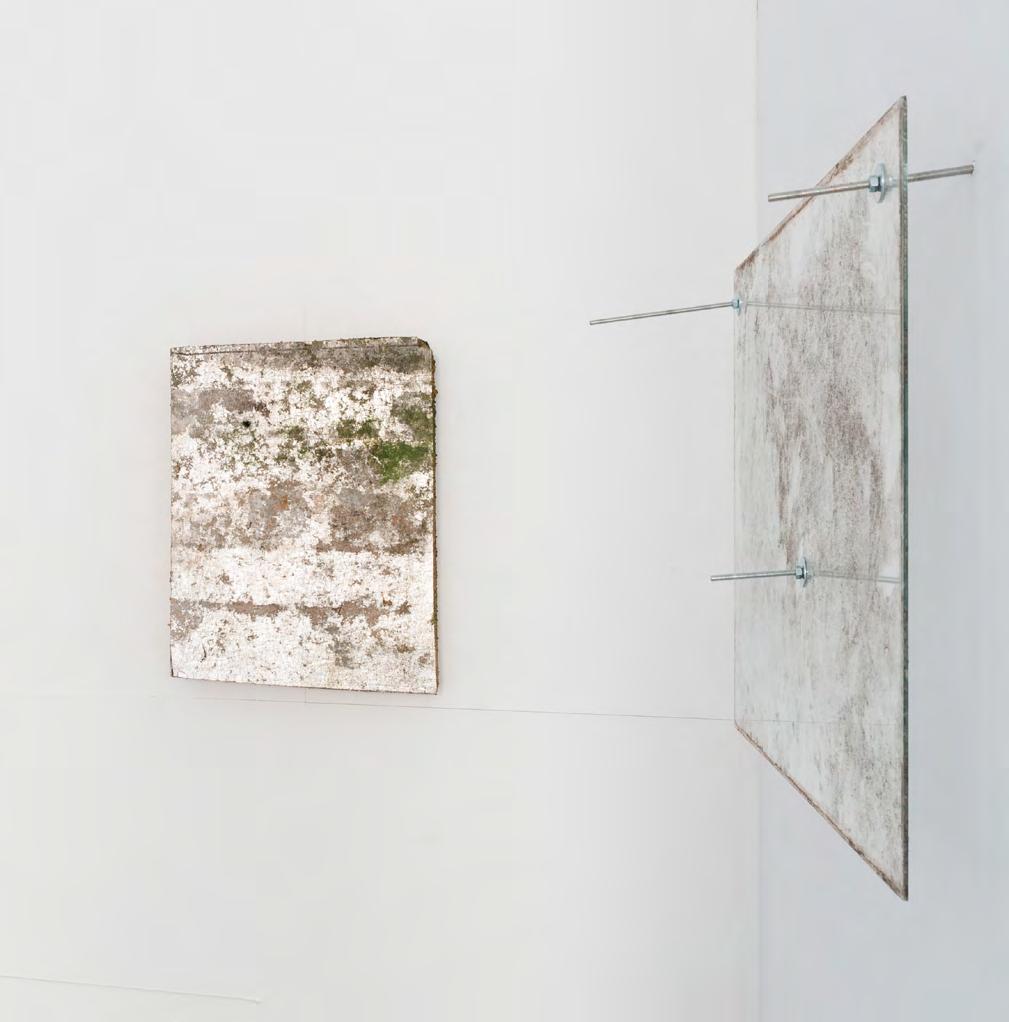


Kate McElroy An Unfurling Unknown 2020 photograph on Hahnemühle rice paper
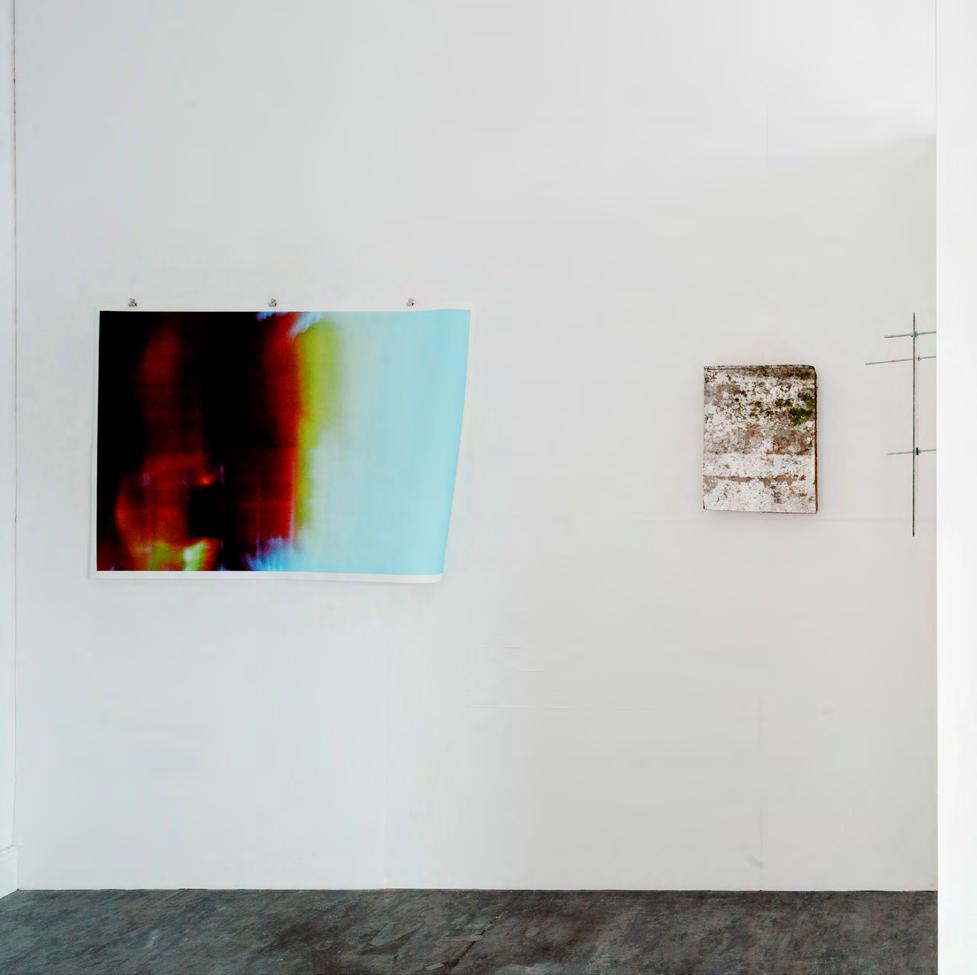
An Unfurling Unknown 2020 installation view
Kate McElroy



Kate McElroy
In_between 2020
glass, aluminium, threaded bars
IDA
MITRANI

My artistic concerns and interests are influenced by concepts and theories of plant culture in the current environmental crisis, including plant blindness, post-naturalism and hybrid materials. The creative process explores the relationship and the interaction between humans, plants and technology, looking at the function and meaning of weeds in today’s society.
By bringing the viewer’s focus to the vegetal world in an evocative and thoughtful way, I examine the symbiosis and conflict between man and nature while making the familiar more visible. Using an environment of textures, my aim is to capture a memory of the present era that reflects the diversity and adaptability of life, and contemplates a vision of a possible new understanding of a ‘clean landscape’ where plastic is incorporated in nature.
The work is comprised of large and small drawing installations together with three-dimensional objects; mixed materials combined with plant-life forms; and layered digitised images. Their positioning in unexpected places evokes the idea of reproduction, sprawl, growth and transformation within the natural world in contrast with the stasis of non-degradable materials.
Ida Mitrani
pliable growth
2020
watercolour & mixed media on Japanese rice paper (graphite pencil, recycled materials, organic life forms, plastic, collage, stitches)
Ida Mitrani
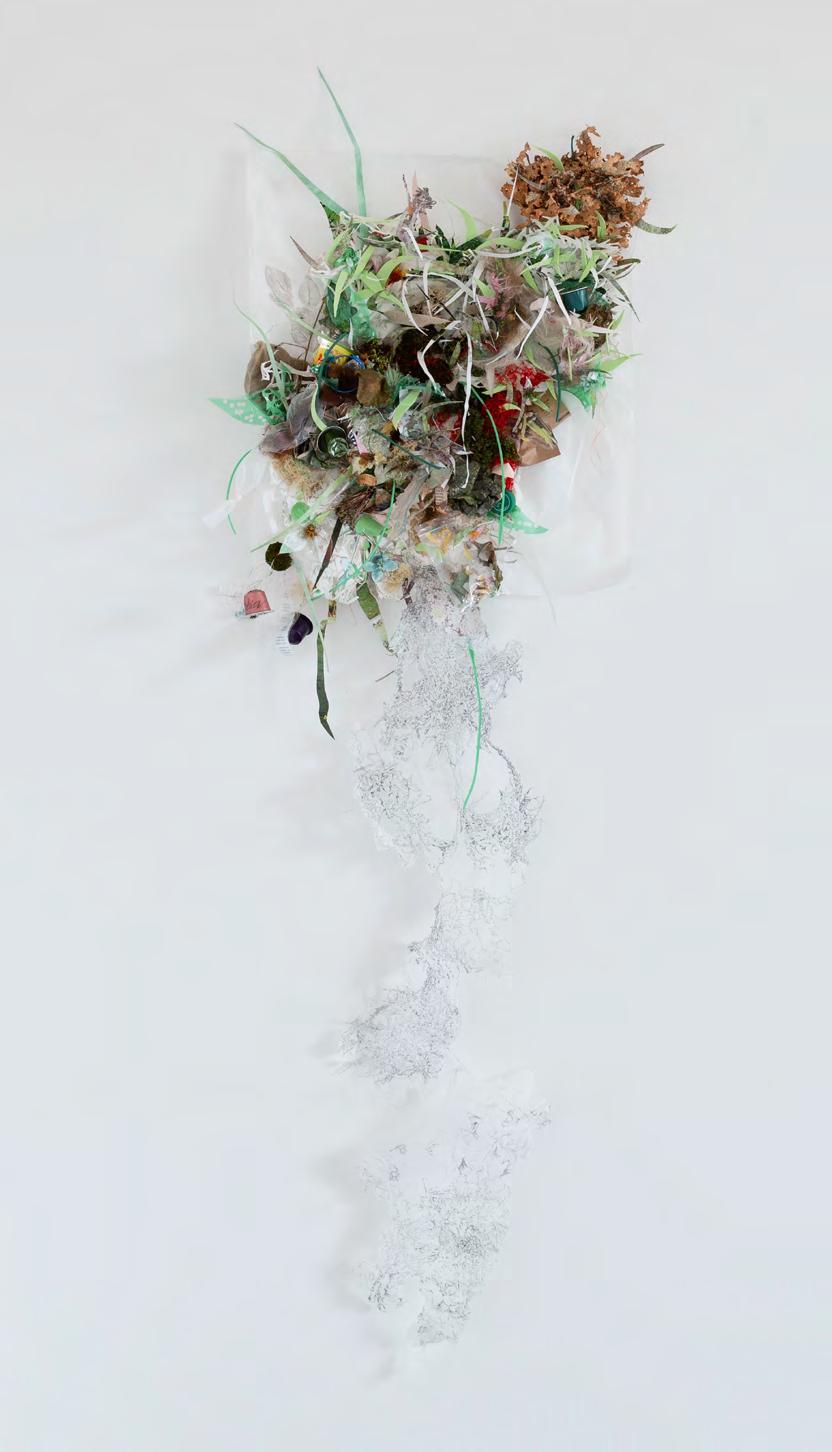
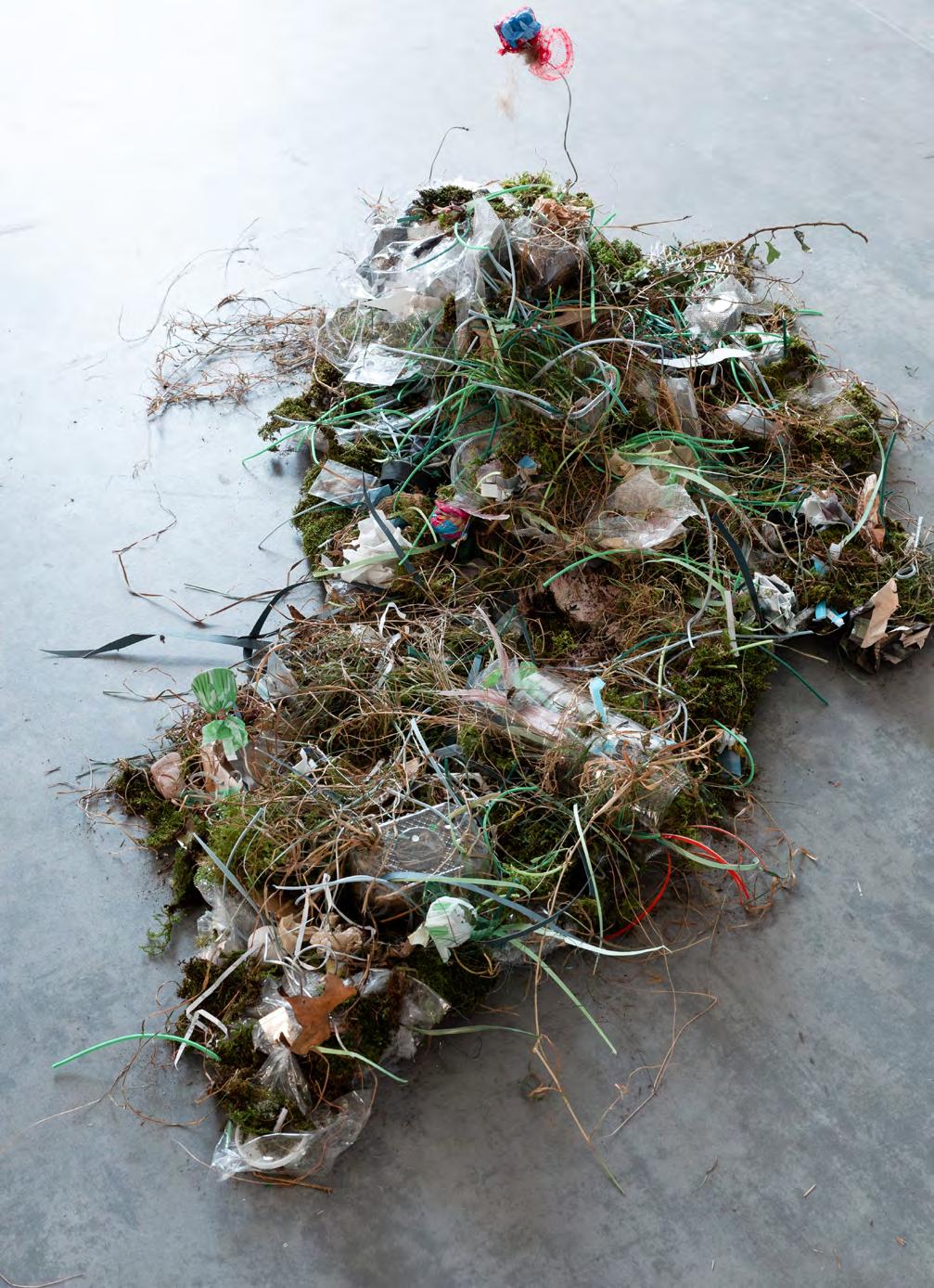
Ida Mitrani humanplanteosmosis
2020
large drawing wall installation & floor installation, (digitised images, watercolour & mixed media on Japanese rice paper, chicken wire, recycled materials, organic life forms, plastic, collage, stitches)
x hominumplasticus IV
2020
digitised image
Ida Mitrani

Ida Mitrani
x hominumplasticus I, II, III
2020
digitised images



2020
large drawing wall installation & floor installation, (digitised images, watercolour & mixed media on Japanese rice paper, chicken wire, recycled materials, organic life forms, plastic, collage, stitches)
Ida Mitrani humanplanteosmosis
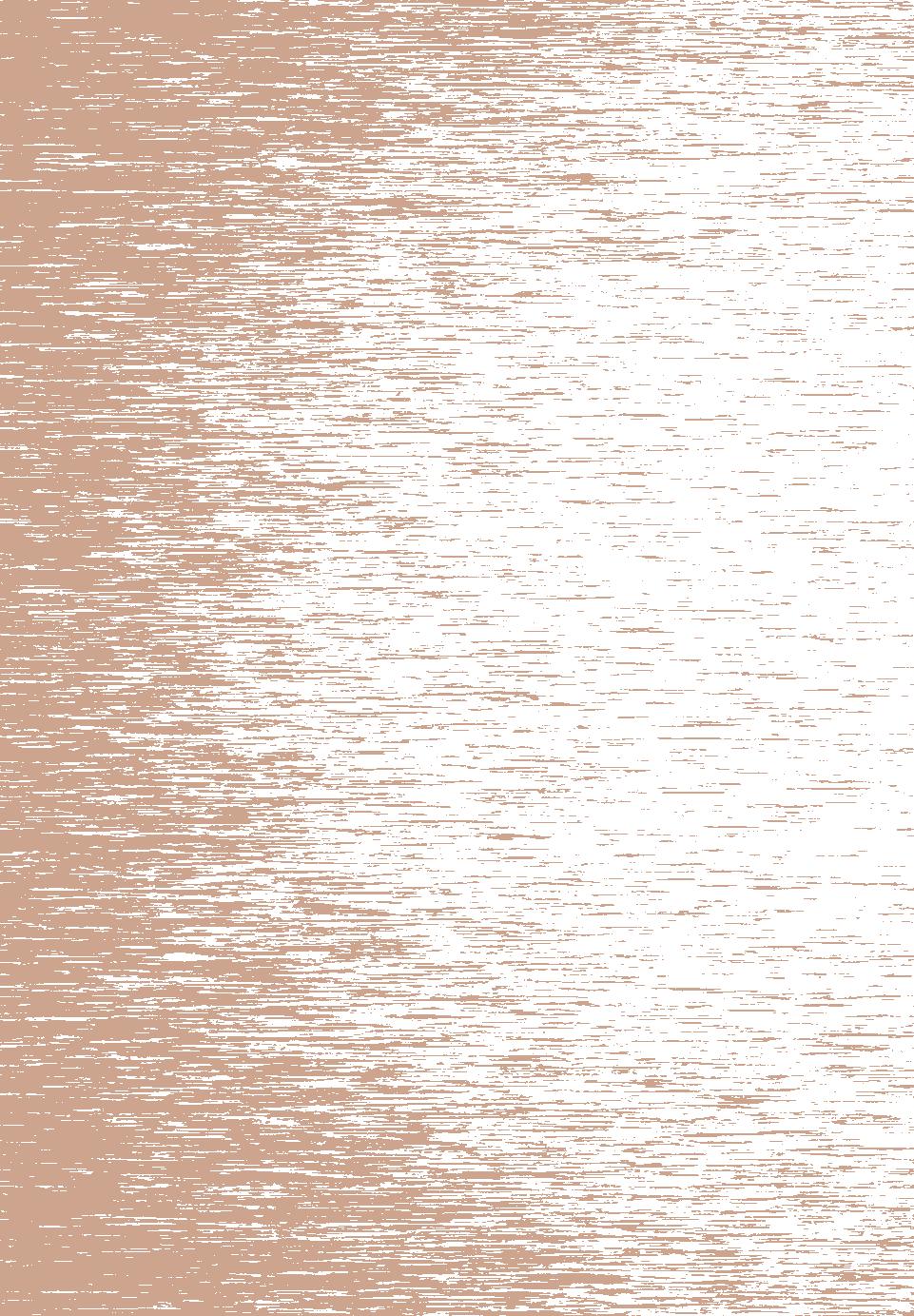

DANNY DENTON 46 VIEWS OF A DUAL CARRIAGEWAY
08–C–46515
she was a drifter; she deactivated her accounts; we don’t know who she was last hanging around with 12–D–72611 there, by the bend in the river… AHH, yes! the bend in the river!
98–C–620 and a man turned up at a housing estate looking for his family but they’d moved on. he asked around a little—children on the green, parents reversing vehicles or putting out the bins, etc— but no-one remembered the man, or his family from back then. everyone there was different now anyhow. standing there, he might have thought about migration—about the leaving, the returning, the fleeing, the remembering, the lostness, the fading away, the dissipation—as hands in pockets on the pavement he watched the crows, the magpies, the dark birds returning to the trees for the evening. he in turn was watched— in a way—by the streetlights and the delivery drones and the closed circuit cameras, and by flithering things we could never exactly or clearly see ourselves, or name, or love.
02–TS–71076 sad little man! you sad fucker!
08–W–18204 them cranes, them rusty cranes [reflected in windscreen glass]
10–G–27830
shorn cuts of scrap wood, branches we are forever suspended in the moment
09–C–36772 no, it’s my car. I’m watching it but it’s my car. I just don’t want to get a ticket. I can’t get a ticket.
181–C–49869 this world is not my ho-ome / I’m just pa-asssing through
132–C–42460 it was at a certain point, in a certain place, that these things came to be other things: the scrap wood; the black hole; the cranes; a dog, on a 7th floor balcony, barking at the sky (or was it a satellite?)
11–C–58300 the swell, you see, the swelling
12–C–62570 you know, there are twenty-six typhoons off the coast of Japan every year. every year. at least two of them make landfall every single year. and that’s just now, before climate departure. sure what chance do we have?
02–TS–71076
I was in a whatsapp group with that man, Lorraine!
[dark roads. headlights.]
151–C–7967
I’ve lived here for my whole life, like—ten whole years!—and there’s still at least, like, a hundred roads I’ve never even been down! isn’t that so cool, mam?!
131–C–26150 argelaguer. arge large. argielargie. the hills. the treed hills. the woods.
12–KE–6573 every time I see a plane coming into land I think of death
10–C–77871
it sounded like wind was coming out of one of the taps, but it was water
08–G–28014 my brother is in the frame of the door saying “i have never been there before”
191–D–29279
it is not the things. it is the movement between the things. that is where the life is get in the car it’s fucking lashing
181–C–69735
her car, swung in on the corner of the T-junction, right into the verge, out of the way of traffic, hazard lights on, a child right in by the ditch bent over double, her with her hand on the child’s back, comforting the child.
[there, glistening in the dark, rain dappling, STREAMING HEADLIGHTS, the beautiful enginesong of CARS AND LORRIES AND TRUCKS, the whippeting MOTORBIKES, the LIGHTS, the GLISTENING TARMACADAM, the darknestling VERGE. the verge. the dark. not life-giver exactly, no, but life-carrier, yes.]
yes. [click] [beep] yes. [click] [beep]
12–C–674
coming back from the airport in the car with dad, and knowing already, or re-living that moment, the waiting for the bag to appear on the conveyor belt, and wondering would it? would it? or would everything—the objects of her life til now, from there, in that place—be lost, or left behind? knowing somehow that the suitcase was gone. all her stuff. sure of it. sure that it would not appear. and then of course there it was, moving toward her again.
09–C–60286
why one bird on this occasion? or why two? or why a flock? and going where? where? what lurks in that dark estuary?
201–MO–12672
imagine this: the recorded breathing of a sleeping child, played louder and louder and louder and
10–D–27854
she said that I did not exist in this country, “for tax purposes”, because I hadn’t paid PRSI (or something) for five years. I sat there in front of her as she told me I did not exist.
12–C–27387
“it’s a bright new coin, this morning” (why the fuck did he always say that?)
131–C–93642
how does it know? how does the phone fucking know what we want to eat?
161–L–2162
just a blip of pain, that’s all. a blip
09–C–86788
a haunted house that was just a man, at the kitchen counter, in the light of the long window over the counter, with a plastic carton of milk by his hand. an inch from his hand maybe. both his hands on the counter, leaning, palms splayed [they always use splayed], his face downcast, over the counter. we cannot see the expression on his face, in the light, the light
141–C–82639
it’s always ‘man’ or ‘woman’ or ‘he’ or ‘she’ or ‘they’ and never just ‘you’
[all just a footnote to an empty space really… all picked up on the transponder. neat gadget that]
141–C–69175
i am doing the best i can
07–C–19303
all the best all best best
05–LD–76225
blip blip bidum put put beeeepppppp bizit bizit fzzzzz
192–D–75846
you are sitting across the yard on one of two mouldy deck chairs, the radio blaring, the sun bleaching the threadbare cover of gravel. it seems like that deck chair is a mile away. it feels so distant, as if the threadbare gravel is an expanse. i am glad of the distance from you, my sister.
00–C–51936
and in the car there was a driver’s seat and over the back of the driver’s seat there was a lining, and stitched into the lining there was a secret compartment, and in the secret compartment there was a note, folded up into eight, and whoever found the note and unfolded it could read what was written on it.
09–C–92231
black hole in the sky. event horizon
01–KK–90211
i would say: “sorry, it’s not that I’ve been staring at you; it’s just that I’m staring into space and you happen to be in that space. I’m sorry. I’m switching the direction of my stare now.” then she would say: “actually i was enjoying it.” and then i would say: “really?” and then she would say: “no. fuck off you creep.” and so on for the entirety of the relationship basically
151–C–68605
a father, explaining to his now adult daughter, who is now studying at the university no less, the ins and outs of all the sporting events that are going to be on TV this weekend, the weekend of her visit
11–C–46860
it said: THAT. THAT IS HOW I FEEL.
131–D–77476
yea, yea. milk, marigolds, biscuits. got it yea
01–C–84101
this is the dream. I go up to Manning Park to see if there’s maybe a hurling game on there, but when I get there the whole place is flooded. as in, re-inhabited by water, drowned for decades. and there’s a barge on it. a barge. I get on the barge in the bottom-right corner of where the hurling field used to be, and it takes me to the top-left corner. the journey takes years. I watch the hill above the field and it never grows dark in all that time. I’m on the barge. just the high bank of the hill and its ditches and that stark sky. and when the barge docks again I get off and, looking around, I see some sort of hole in the earth of the bank, like a burrow, and I squeeze into it and crawl through it and it becomes a sort of nookish crawl corridor lined with tiny bookcases, which are stocked with these books from my childhood that I suddenly remember (and which now, of course, I forget) and with photo albums maybe, and in the dream I’m crawling through this space, which I know is behind the skirting board of a room, crawling—I am, that is—in through a gape in the skirting board, suddenly able to sit up and encounter the very same space but from the other side of the wall. and then I am inside a small terrace house that’s all stairways (little stairways, long stairways, two-step stairways and vast curving stairways)—stairways on the walls, through the doors, up & down, across, over, and so on, and there’s this one lamplit staircase among all the staircases that has wine-coloured carpet on it, and on every stair there’s an old house telephone (different types, from different eras), and they are all hooked up with wires going I don’t know where but I know that all of life—every conversation, every thought, every story—is playing out on those telephones and that I can listen if I’ll only pick one of them up and I do pick one up and the voice says:
“… a glass cabinet, a waxed hand… other things I can’t remember now. But I knew them all! I wept! I went back to the phones! All I heard was a dial tone from whichever one. These were childhood objects! My babyhood! I wept profusely!”
I don’t know why I feel so safe in this interior dream of a stairwayed space—or dream of an interior stairwayed space—but I do. Feel safe, that is. And I feel sorry for the childhood objects, whatever they are, but I feel safe too, and
10–C–86828
i’ll be there in five, love
141–C–68509
yes, she—or it—was there. i saw her in the clearing. i remember it perfectly. she stood there in the sweeping light of the jeep. it was a dazzling moment
10–CE–26207 the name lingers after death, like a stain
06–WW–48008
inverted, inverted. all inverted
05–C–35088 oh, okay
08–C–72024
ask yourself this: what does your living emanate?
walking home, home
cycling home, home
driving home, home


INTER ACTIONS
This year the Students have devised a special programme of interactions with Covid guidelines built in to their thinking. Rather than seeing these as restrictions they provide an opportunity to focus on working within college, engaging closely with students and, for the first time also with staff, as audience groups. Imaginative ideas to engage wider publics include live footage of the show and online project packs for specific groups. Perhaps the most unusual aspect of this year’s programme of events are activities designed solely for each other; exemplifying the sense of care which characterises this peer group.
CATARINA ARAÚJO
PADRAIC BARRETT
DEIRDRE BREEN
AOIFE CLAFFEY
SEÁN DALY
JOSEPH FOGARTY
INGUNA MAINULE
KATE McELROY
IDA MITRANI
@az_catarina
@padraicbarrettstudio
@deirdrebreen
@aoifeclaffeyart
@sepd123
@fogarty_art
@mainuleinguna
@kate_mcelroy_
@idamitraniart
www.padraicbarrett.com
www.deirdre-breen.com
www.aoifeclaffeyart.com
MA:ART & PROCESS STAFF
Trish Brennan
Colin Crotty
Pádraig Spillane
Lucy Dawe-Lane
Sarah Kelleher
Eve Olney
Helen Farrell
VISITING LECTURERS
Clodagh Emoe
Marysia Wieckiewicz-Carroll
Matt Packer
Eve Olney
External Assesor
Breda Lynch
Facebook www.facebook.com/maap.ccad/about/
www.instagram.com/maapcrawford/?hl=en
Phone Number
+353 (0)21 4335222
Address 46 Grand Parade Centre
Cork T12 VN56
Course URL www.cit.ie/course/CRAARTP9
Contacts
Dr Lucy Dawe-Lane lucy.dawe-lane@cit.ie
CCAD Enquiries
ccad.enquiries@cit.ie
MA:AP 2020 ONLINE EXHIBITION
https://crawford.cit.ie/maap-show-2020/
MA:AP 2020 WISHES TO THANK
Nicholas Sommers
John McCarthy
Martin Lynch
Helen Maguire
Catherine Fehily
Cork City Gaol
Cork Metal Company
Cork Printmakers
Cork Migrant Centre
GOMA Gallery of Modern Art Waterford
Badly Made Books
Carol Lynch
Sharon McCarthy
Nuala Wall
Breda Lynch
Chris Hurley
Cork Film Centre
Marysia Wieckiewicz-Carroll
Clodagh Emoe
Matt Packer
Mary M. Cronin
Mike Hannon
Niall Sweeney
Paddy Rice
Kevin Tuohy
James L. Hayes
Ossin Hanrahan
Lynn-Marie Dennehy
Tim Collins
Luke Sisk
Janice Hegener
Conall Cary
Joe O’Neill
Valerie Renehan
Louise Foott
A special thanks to all our families and friends for their love and support throughout the MA year
Installation photography & video by Mike Hannon
Design by Pony Ltd
MA : Art & Process is a masters programme led by a teaching team of practicing artists and research active academics allowing for a vibrant and exciting learning atmosphere that responds to the dynamic field of contemporary art practice. This intensive programme enables students to investigate, develop and position their art practice. It offers a city centre studio space, innovative approaches to teaching, and professional experience through collaborative projects, which this year included IMMA summer school, Road Books, and Sirius Arts Centre.
The concept of process is understood in a variety of ways: as material exploration and engagement with medium and technique; as theoretical investigation and systems of inquiry without resolved or object-based endpoints; as innovative models or art distribution, including the possibilitiesof working outside traditional sites of art production and reception. Process also refers to the progression each student achieves over the course of the MA, which involves the observation, critique, econstruction, documentation and rebuilding of individual practice.
MA:AP welcomes students with diverse backgrounds such as painting, performance, theatre, film, architecture, installation, sound and sculpture. Process is proposed as a point of common focus for peer interaction, inviting diversity of approaches and media, and allowing the points of convergence and divergence between a range of practices to be explored.
Now in its ninth year MA:AP has established itself as one of the leading masters programmes in Ireland through the reputation of its staff and alumni.
Information and application details: www.cit.ie/course/CR_AARTP_9 ccad.enquiries@cit.ie +353 (0)21 4335200 http://crawford.cit.ie

